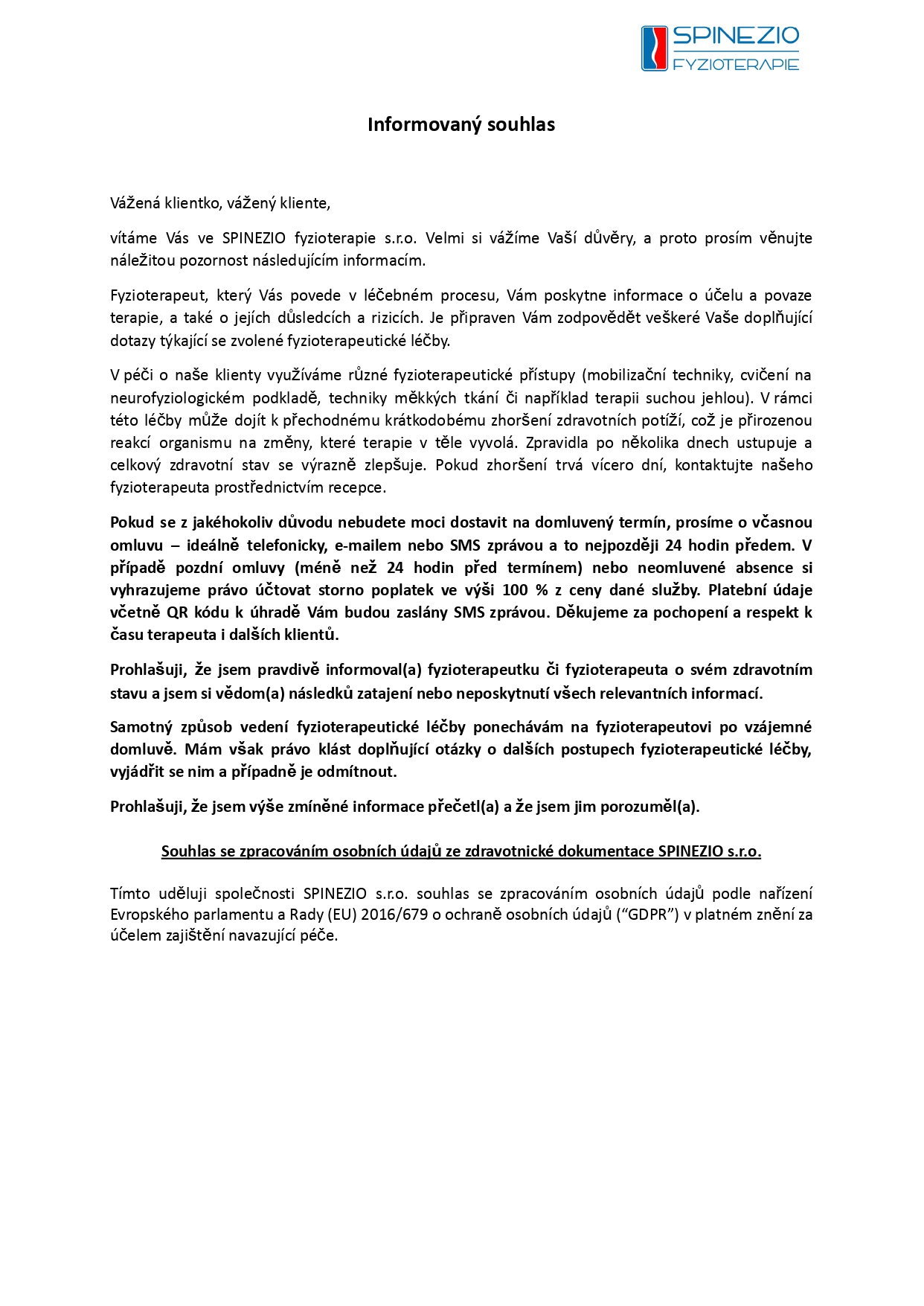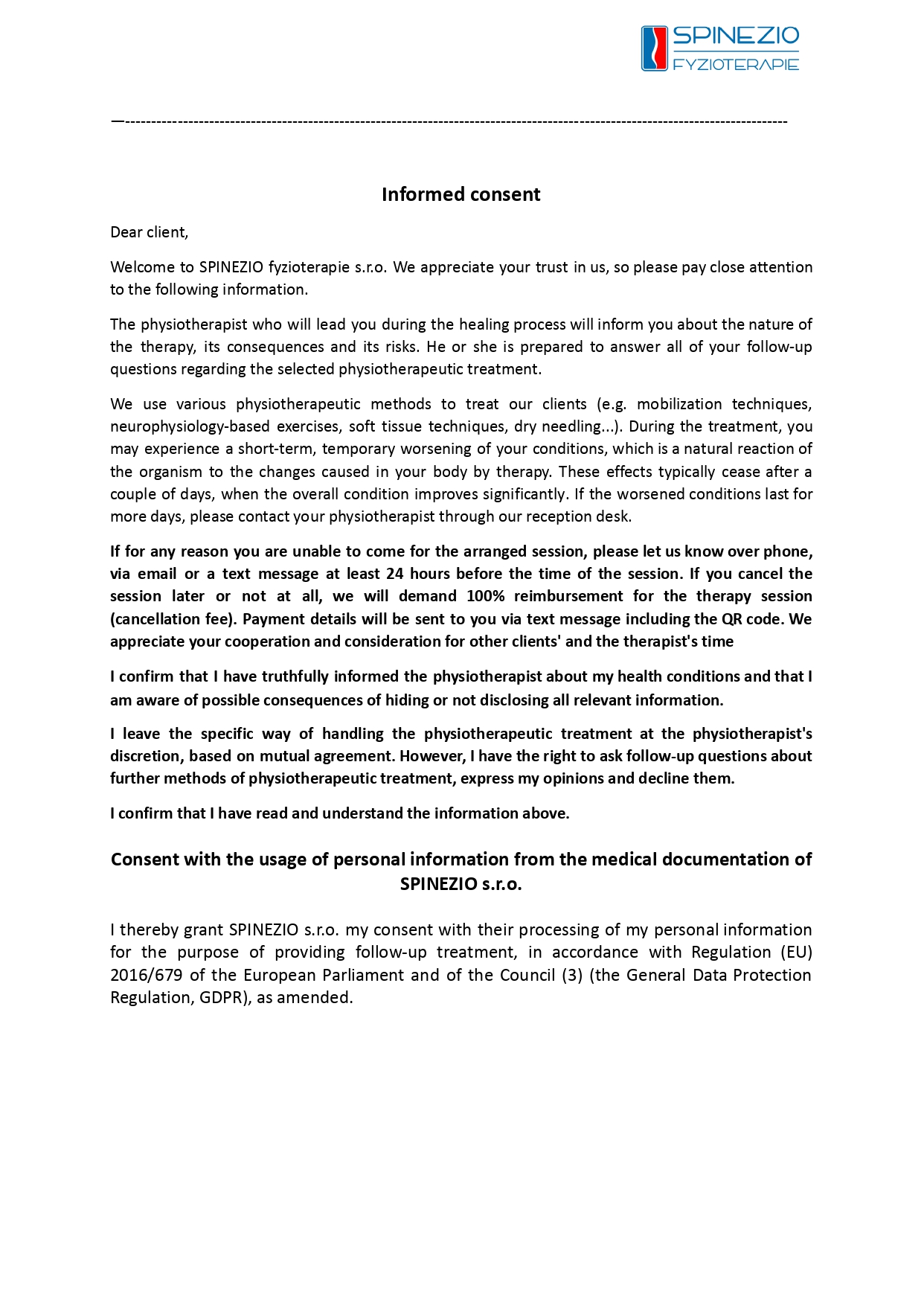Ultrasound examination allows us to "see beneath the surface". Visualization of individual structures of bones, joints, tendons, muscles, nerves and blood vessels in some cases helps us to create a more precise, targeted and effective therapy plan. In addition, it offers us the opportunity to check the condition of the mentioned structures and thus possibly verify the effect of the chosen therapeutic approach.
We most often use ultrasound examinations for:
· Acute and chronic pain in muscles, tendons and joints (sports trauma, joint effusions, hematomas, ...)
· Scars in soft tissues (e.g. scar condition after cesarean section, appendix, ...)
· Diastasis and condition of abdominal and pelvic floor muscles in women (not only after childbirth)
· Degenerative changes in joints and the surrounding area (osteophytes - calcification of tendons)
· Inflammatory processes in soft tissues and joints and others.
Who provides examinations at SPINEZIO physiotherapy? Bc. Klára Pekárková
How much does the examination cost? 750,- initial examination / 600,- follow-up examination (examination time approx. 30 min.)
How can I book an examination? Via reception (+420 725 736 026, info@spinezio.cz)
Technical information and parameters:
Ultrasonography (USG, ultrasound) is a diagnostic imaging method based on the principle of mechanical waves with a frequency of 4 - 15 MHz. Ultrasonic waves pass through tissues and are partially reflected at the interface of different tissue densities. Each tissue has its own specific density, which behaves as hypoechoic (darker color) or hyperechoic (lighter color) on the image. It is the echogenicity of the tissue that helps us determine the character of the given tissue. The device's probe transmits waves and receives their reflected part, which is subsequently processed by the device into a two-dimensional image.
At SPINEZIO physiotherapy we use the SonoScape E2 device, which has a frequency of 8-14 MHz, which ensures a high-quality image of tissue to a depth of 7-10 cm and is suitable for examining the musculoskeletal system, its nerves and blood vessels. The Doppler mapping function allows you to monitor slow and fast fluid flows in healthy or damaged tissue.
Ultrasound indications:
· traumatic changes (injuries), rupture of ligaments, joint capsules, tendons, muscle fibers
· scars in soft tissues
· inflammatory processes of soft tissues and joints
· joint effusions / hematomas in the muscle
· degenerative changes in the joints and surrounding area (osteophytes - calcification of tendons)
· pathological changes - cysts, bursae, ganglions, ...
· narrowing syndromes (carpal tunnel, ...)
Advantages of ultrasound:
· non-invasive, painless examination
· static and dynamic examination of tissues
· minimal time requirement (20 – 30 minutes)
· absence of ionizing radiation – no side effects and absolute contraindications
· monitoring of the condition during therapy – precisely targeted therapy
· no need to prepare for the examination















